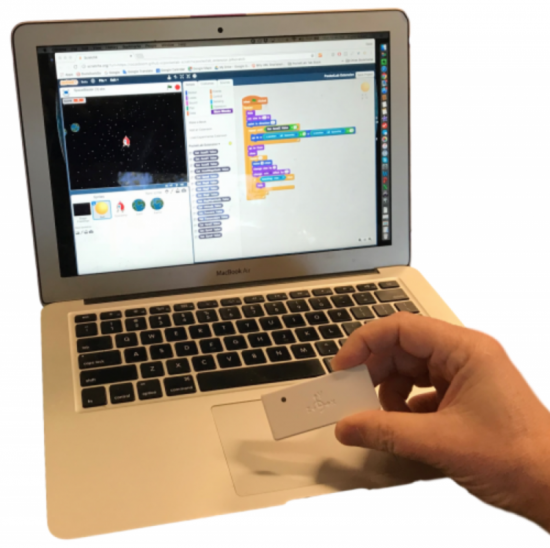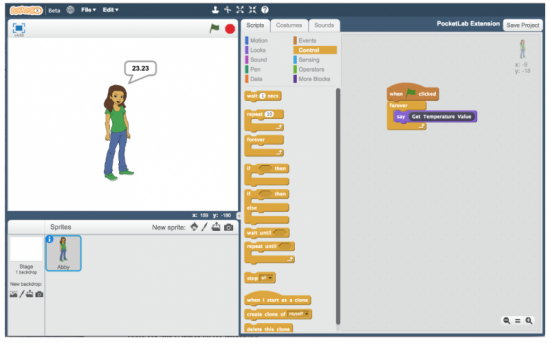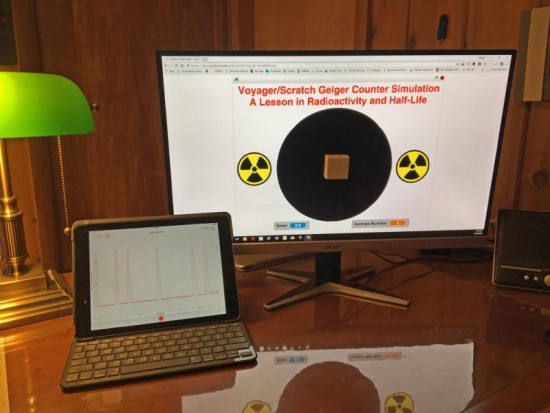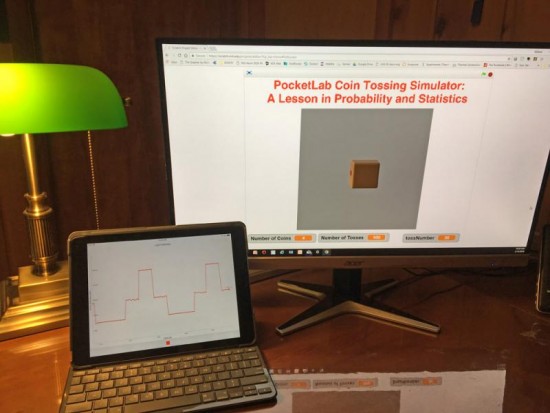A Wireless Controller for a Scratch Game
Let's create a game in Scratch that is controlled by a wireless controller using the PocketLab accelerometer. PocketLab can connect directly and wirelessly to Scratch, and can send sensor data in real time. This game uses the PocketLab accelerometer to move sprites around the screen.
This program is for intermediate or advanced Scratch users, and if you would like a simpler starting point to get started with connecting Scratch to the outside world through PocketLab, you can start here:







